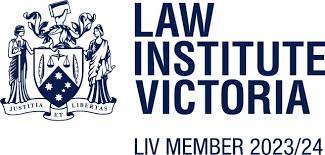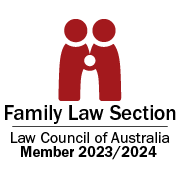Most family law clients we see have recently separated from their spouse or partner and are understandably apprehensive about how to distribute the assets of their relationship.
If you are in this situation, the good news is that you do not necessarily need to go to court. The bad news is these matters cannot (or should not!) be resolved by simply agreeing on something with your former partner. This is what we would refer to as an informal property settlement and it is not legally enforceable. The risk which you take in doing this is that it doesn’t provide you with any protection if circumstances later change. At that stage, both parties would be able to demand a property settlement be entered into or issue court proceedings. This could result in you receiving less or becoming responsible for your former partner’s debts.
If you wish to enter into a valid and legally enforceable property settlement, there are only two ways in which this can be done. The first is a Financial Agreement and the second is ‘Consent Orders’. This article focuses on Financial Agreements, which are often referred to as binding Financial Agreements (or BFA’s).
What is a Financial Agreement?
A Financial Agreement is a contract entered into between two parties who are married, were married, intend to be married or are living together in a de facto relationship. Although a Financial Agreement can be entered into at any stage before, during or after separation, this article will focus on the type of Financial Agreement which is prepared for the purposes of distributing all assets of the relationship after it has broken down. The most unique aspect of a Financial Agreement is that a court does not see it. It is however, a requirement that both parties receive independent legal advice on the agreement before signing.
How do I go about entering into a Financial Agreement?
If you have decided that a Financial Agreement is right for you, you must receive legal advice in order to enter into one. In doing so, we would recommend undertaking the following process:
Step 1 – Initial Appointment with a Lawyer
Before you start having serious discussions about a property settlement with your former partner, we strongly recommend that you have an initial appointment with a Lawyer. At this appointment, the Lawyer can give you a detailed explanation of the process involved and answer any questions you may have, but most importantly, they can give you an assessment of what you are entitled to. It can be critical to have this information when you begin negotiating your property matters with your former partner. We offer a free, no obligation initial appointment with any of our family Lawyers.
At this stage, it is important to note that your Lawyer is likely going to ask for some information about your assets and liabilities. You may find therefore, that it is best for you to attend to step 2 first if you are on good terms with your former partner, so that you have as much of this information as possible when you see your Lawyer.
Step 2 – Disclosure
Once you have some idea of what you are entitled to, we recommend that you try to discuss your property matters amicably with your former partner. The important first step in these discussions is for you to exchange full financial disclosure. This usually involves exchanging details about all of your assets, including information about all of your properties and businesses, bank accounts, superannuation statements and similar financial documentation. It is not possible for you to know if the agreement you have reached is fair unless you know all of the assets which exist between the parties.
It is also important to note that full financial disclosure must be exchanged at some point throughout the process in any event. Once you have reached an agreement, a Lawyer needs all of this information to be able to prepare a Financial Agreement which is valid and legally enforceable.
Step 3 – Negotiation
At this stage, you should have an understanding of all of the assets and liabilities which exist between the parties, as well as some idea of what you are entitled to. You are therefore in a position in which you can begin negotiating with your former partner. Ideally you can discuss the matters directly, but we would also highly recommend attending mediation. Mediation should be conducted by a registered Family Dispute Resolution Practitioner and can range in cost from $30 to $3,000 per session. Services such as EACH, Relationships Victoria and Better Places offer low cost mediation across Victoria. The goal of these negotiations is for you to reach an agreement which you are happy with and that falls within the range of what your Lawyer advised you was fair.
Step 4 – Drafting the Document
If you are able to reach an agreement with your former partner, you can then return to your Lawyer, so that they can prepare a Financial Agreement to formalise your agreement. Of course, if you are unable to reach an agreement, your Lawyer can also help you to try to negotiate an outcome. The more that you can do yourself however, the easier it will be for your Lawyers to try to reduce your legal costs.
In order to prepare a Financial Agreement, your Lawyer will require certain information about your relationship, a full list of all assets and liabilities of the parties, as well as an understanding of the agreement you have reached. Once the document has been prepared, your Lawyer will send you a draft. It is critical at this stage that you read the document carefully and confirm that all information is true and correct. If there is anything which you don’t understand, you should seek clarification from your Lawyer. Your Lawyer may also require some additional information from you before they can finalise the agreement.
Step 5 – Review and Negotiation
Once you and your Lawyer have settled on a Financial Agreement, your Lawyer can send the final document to your former partner.
At this stage, your partner must engage their own Lawyer to review the agreement. Of course, the hope is that you have already agreed on the terms of the agreement and that your former partner will therefore only need to receive legal advice on it and then sign. It is however, almost inevitable that some terms of the agreement will need to be re-negotiated. This may be because the legal advice which your former partner has received suggests that your agreement should be changed. More commonly however, there are likely to be some technical terms which they are not comfortable with or need to be amended before signing.
Step 6 – Signing and Exchange
After both parties have negotiated the finer terms of the agreement, you should have a final document for signing. Although both parties have already been speaking with Lawyers, they must be provided with full independent legal advice on the final version of the agreement before signing. Our firm’s practice is to send this final letter of advice in writing. This letter is usually quite lengthy and requires you to read it carefully and give it due consideration. Again, if you require any clarification, do not hesitate to ask your Lawyer.
If you are comfortable with the advice you have been given, you can sign. At this stage, you should make an appointment with your Lawyer to sign the Financial Agreement. Your Lawyer should be in attendance to witness your signature. They are also required to sign a certificate confirming they have provided you with the requisite legal advice. The agreement should be signed in duplicate, so that each party can retain their own version.
Once you have signed the agreement, it will then be sent to your former partner’s Lawyer so they can give their final advice and undertake the same signing process. Once fully signed, each party (or their Lawyer) should retain an original version of the signed agreement for their records.
Conclusion
There is no question that family law separations are one of the most stressful times in someone’s life, but our family lawyers will do everything they can to make the process as easy as possible for you. If you are in this situation, it is our strong recommendation that you attempt to resolve the matter amicably with your former partner and without the need to go to court. It is equally as important however, that any agreement which you reach is formalised. The process of formalising an agreement takes time and effort but is usually resolved between one and two months. More importantly however, it is the only way to protect yourself from further claims from your former partner without physically attending court.
If you have recently separated, we recommend that you make an appointment with one of our family Lawyers to discuss your options. We offer a free initial appointment to all new family law clients.


